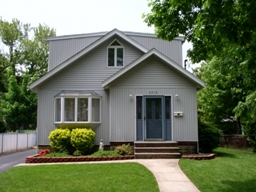What’s Ahead For Mortgage Rates This Week – Sept 8, 2014
 Last week’s housing-related economic news was slim, likely due to the Labor Day holiday Monday. On Tuesday, the U.S. Commerce Department reported that construction spending for July increased by 1.80 percent as compared to June’s revised reading of 1.0 percent and expectations of a 1.0 percent increase for July.
Last week’s housing-related economic news was slim, likely due to the Labor Day holiday Monday. On Tuesday, the U.S. Commerce Department reported that construction spending for July increased by 1.80 percent as compared to June’s revised reading of 1.0 percent and expectations of a 1.0 percent increase for July.
The Federal Reserve released its Beige Book report Wednesday; the collection of anecdotes from business contacts within the 12 Federal Reserve districts indicated that the general economy was strengthening as well as labor markets. The Fed noted a shortage of skilled workers. New construction and home sales grew modestly, but the Fed reported that fewer than half of the districts reported growth in real estate activity.
This information appears to be consistent with recent media reports of falling home sales, mortgage originations and demand for homes. Analysts say that mortgage lenders remain wary of loosening mortgage credit standards without protection from having to repurchase faulty mortgages from Fannie Mae and Freddie Mac.
Mortgage Rates Saw Little Change
Freddie Mac reported that average mortgage rates and discount points saw little change last week. The average rates for a 30-year mortgage and a 5/1 adjustable rate mortgage were unchanged at 4.10 percent and 2.97 percent respectively. Discount points were also unchanged at 0.40 percent. The average rate for a 15-year fixed rate mortgage fell by one basis point to 3.24 percent with discount points also lower at 0.50 percent.
Non-Farm Payrolls Add 142,000 Jobs, Unemployment Rate Unchanged
The Bureau of Labor Statistics Reported that 142,000 new jobs were added in August. Analysts had expected 228,000 new jobs added, but many analysts said that the abrupt decline in jobs added was a fluke. A couple of short-term incidents impacted retail and automotive sectors as a supermarket chain cut hours and fewer July layoffs in the automotive sector led to fewer workers called back in August. The unemployment rate remained at 6.10 percent.
Weekly jobless claims rose to 302,000 against expectations of 300,000 new jobless claims and 298,000 new jobless claims in the prior week.
What’s Ahead
This week’s scheduled economic news is also light on housing and mortgage reports. Retail spending, consumer credit, and federal budget data are some of the reports set for release.

 Last week’s economic news included several reports related to housing. The Case-Shiller and FHFA reports for June showed a further slowing in home price growth. New home sales for July fell short of the expected reading, but pending home sales exceeded expectations. The details:
Last week’s economic news included several reports related to housing. The Case-Shiller and FHFA reports for June showed a further slowing in home price growth. New home sales for July fell short of the expected reading, but pending home sales exceeded expectations. The details: The Case-Shiller 10 and 20-City Home Price Indices for June reported year-over-year gains of 8.10 percent while the Case-Shiller National Home Price Index covers all nine census regions and reported a year-over-year gain of 6.20 percent.
The Case-Shiller 10 and 20-City Home Price Indices for June reported year-over-year gains of 8.10 percent while the Case-Shiller National Home Price Index covers all nine census regions and reported a year-over-year gain of 6.20 percent.